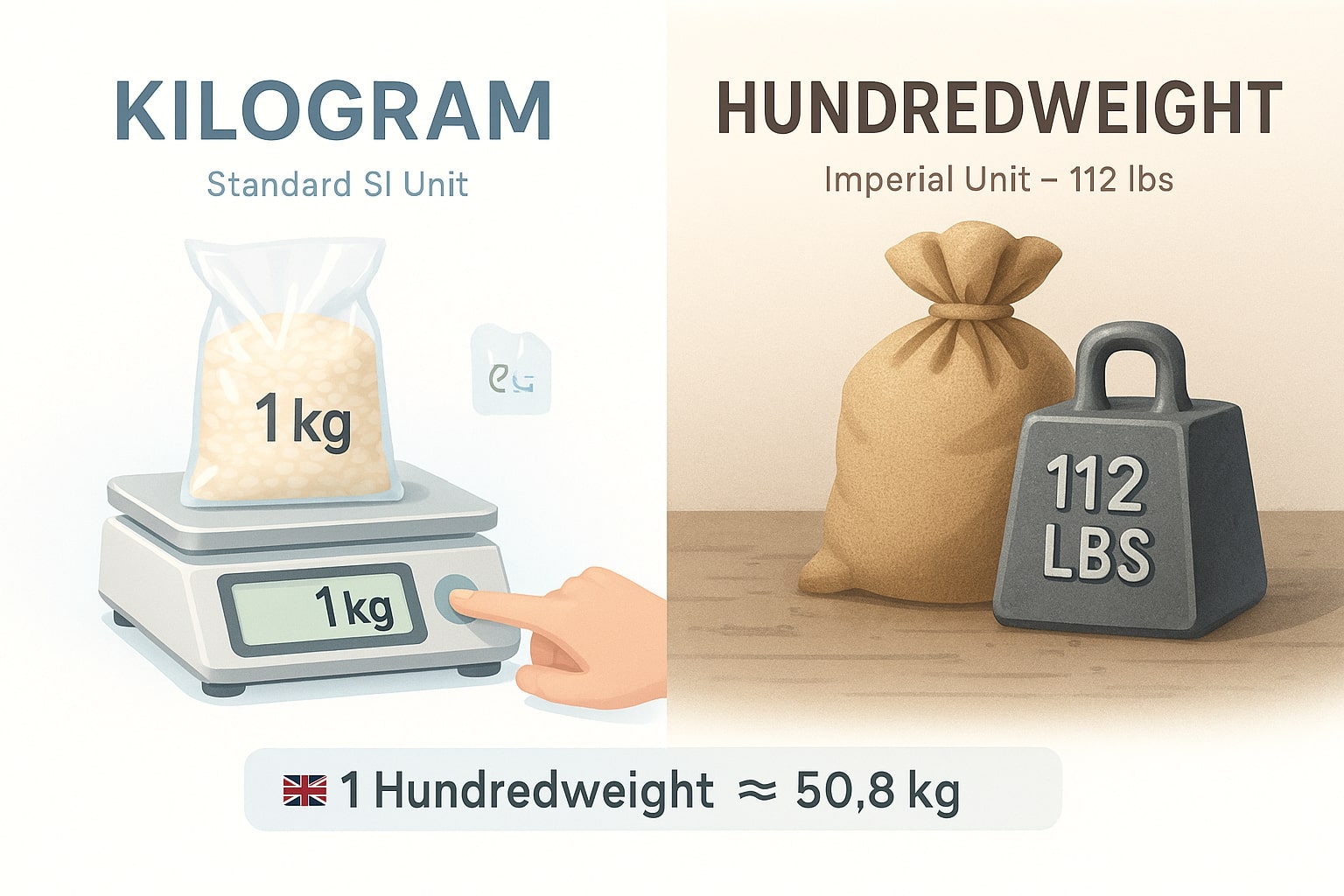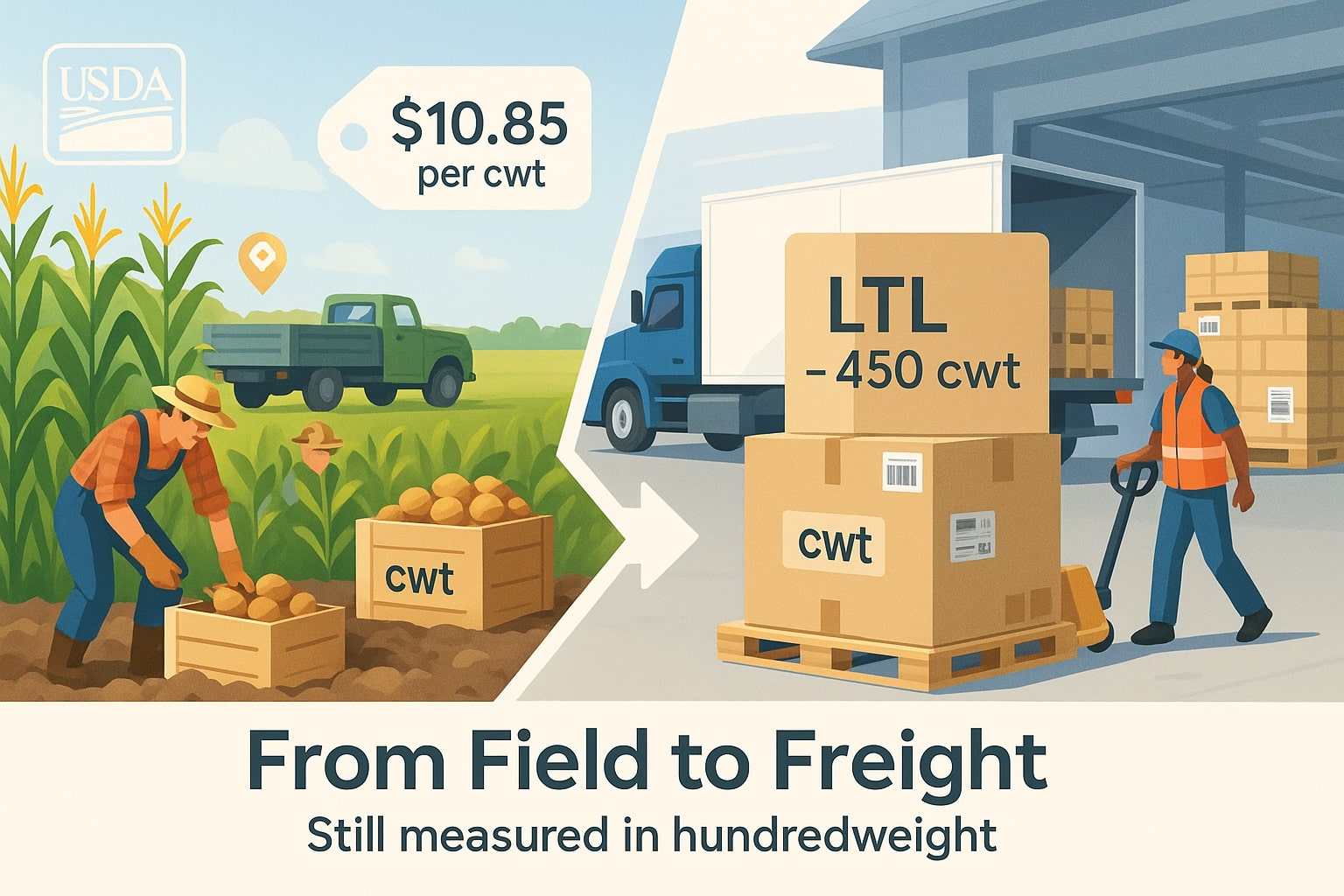kilograms to hundredweight (US) – How to convert kg to cwt
Need to convert kilograms to hundredweight for a logistics task, agricultural shipment, or school project? You're in the right place. Whether you're shipping goods or crunching numbers, understanding how to convert kg to cwt (U.S. hundredweight) is essential. You can also explore our unit converter or browse weight conversion tools to handle all your measurement needs.
What is a Kilogram and a Hundredweight?
The kilogram (kg) is the standard unit of mass in the International System of Units (SI). It’s defined based on Planck’s constant and is used worldwide to measure weight in industries like science, medicine, trade, and everyday life.
In most countries, kilograms are the default unit for measuring body weight, food, and freight. If you work in international shipping or scientific research, you’re working with kilograms—or converting from them.
For imperial conversions, also see our kilograms to pounds or kilograms to tons tools.
A hundredweight (cwt) is a unit of mass used in some English-speaking countries, but here’s where it gets tricky:
If you’re converting U.S. weight into hundredweight for things like crop yield, livestock, or shipping pallets, this tool is for you. You can also calculate backward with our pounds to cwt converter if needed.

Conversion formula:
1 kilogram = 0.0220462262 hundredweight (US)
To convert kg to cwt, multiply the number of kilograms by 0.0220462262.
Example:
50 kg × 0.0220462262 = 1.1023 cwt
This formula is useful for anything from calculating agricultural shipments to planning commercial freight weights.
Did you know?
-
Kilogram:
In 1799, France adopted the kilogram as its official unit of mass. It was one of the first countries to move away from inconsistent traditional units, setting the standard for modern SI units. -
Hundredweight (US):
The U.S. hundredweight is still used in agriculture, livestock trade, and freight. For example, in commodity markets like grain or beef, prices are often quoted per cwt.
From Cornfields to Freight Lines: How Hundredweight Still Moves America
In the world of U.S. agriculture, the hundredweight remains an essential unit. For example, the United States Department of Agriculture (USDA) still reports crop prices and yields in cwt, particularly for potatoes, sweet potatoes, and rice. A 2022 report showed that the average price for potatoes was listed as $10.85 per cwt, reflecting how embedded this unit remains in the agricultural economy.
In logistics too, freight brokers and carriers commonly use hundredweight to price LTL (less-than-truckload) shipments. Even though the metric system dominates globally, hundredweight lives on in rural communities, warehouses, and freight documents across the U.S.
This blend of old and new systems reflects America's diverse measurement culture—a world where kilograms and cwt live side by side on shipping labels.

Conclusion
How to convert kilograms to hundredweight helps bridge metric and U.S. customary units—especially in industries like agriculture, freight, and trade. With a quick multiplication, you can go from kg to cwt and streamline your workflow, reporting, or project.
Explore all weight conversion tools or use our all-in-one unit converter for full flexibility at Jetcalculator

